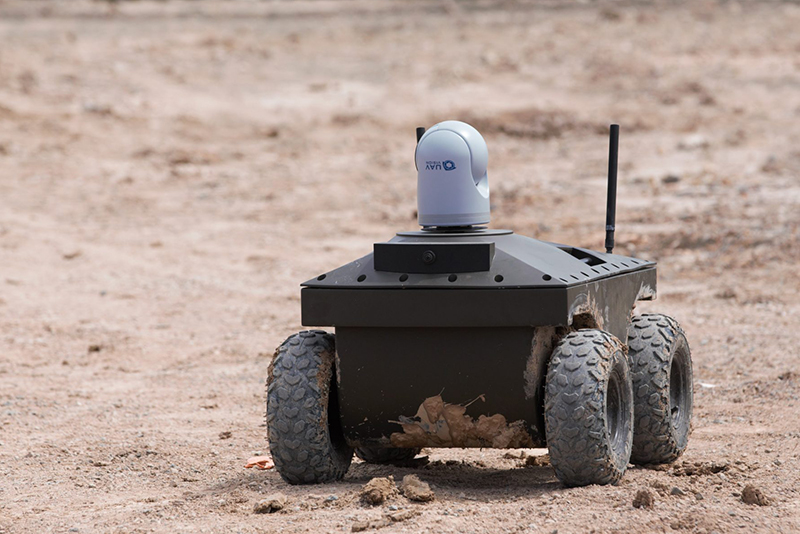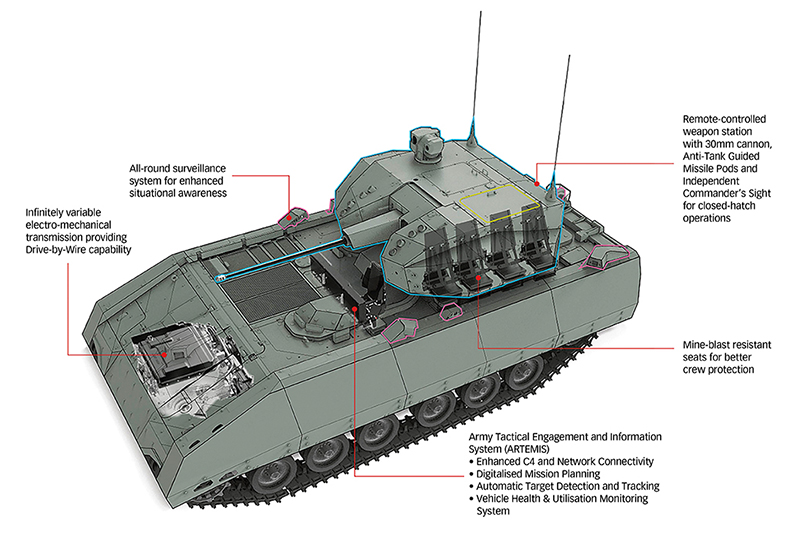
Unmanned ground vehicles will see a significant take up in Asia as a flexible, cost effective and mission agile alternative to more expense manned systems.
UGVs Expenditure
The cumulative expenditure on military Unmanned Ground Vehicles (UGVs) over the next decade to 2029 is expected to value around $7.4 billion, according to an analysis study by Reporterlinker based on Globaldata research.
The study, published in August 2019, states that the military UGV market was projected to be worth $597 million by the end of 2019, and suggested that with “a compound annual growth rate (CAGR) of 3.58 percent to value $849 million by 2029.”
Military users are increasingly experimenting with UGVs to establish their utility and practicality in a variety of roles, including intelligence gathering, combat support and logistics supply among others.
According to the study, while North America is expected to account for nearly half of the requirement at 46.1 percent up to 2029, Asia-Pacific will account for over one third at 34.7 percent with Europe securing around a 14 percent share. The Asian demand will largely come from militaries in China, India, Japan and Singapore.
The study categorises UGVs into five areas of specialisation:
- Combat UGVs,
- ISR UGVs
- EOD/IED UGVs
- Mine-clearing and Engineering UGVs
- Logistics UGVs
Of these, the study finds that the largest expenditure, around 47.6 percent ($3.5 billion), will go on combat UGVs.
During the forecast period, combat UGVs account for the largest share of 47.6 percent, with cumulatively expenditure of $3.5 billion. The study finds that “Asia-Pacific is expected to be the dominant market for combat UGVs throughout the next decade, followed by North America and Europe.”
EOD/IED UGVs will be second with a share of around 20.1 percent. In order of decreasing investment will be the sectors for EOD/IED, logistics, ISR then mine-clearing and engineering with shares of 14.9 percent, 12 percent, and 5.4 percent respectively over the 2019-2029 period.
Australian Mule
In 11 June 2017, Queensland-based Praesidium Global announced that it had won a contract to supply its unmanned ground vehicles for test and evaluation by the Australian Army.
The company’s main offering is the Mission Adaptable Platform System (MAPS), a medium-sized semi-autonomous platform which can, according to the company, “be fitted with range of plug and play options from on-board re-charge generator and additional battery pack, through to acoustic gun shot detection.” A remote weapons station can be fitted with a low-recoil 30mm cannon.
The company states that its Mule version is suitable for both tactical and non-tactical scenarios. It is guided by either remote control, or it can be set to follow a soldier, or can be programmed to run between two pre-programmed points autonomously.
The Australian Army used the MAPS Mule unmanned ground vehicle during the summer exercise Talisman Sabre 2019, held in Shoalwater Bay Training Area, Queensland. The Mule, a six-wheeled platform that can carry over 500kgs of equipment, was trailed by soldiers from 9th Force Support Battalion (9FSB) as they conduct operations.
Lieutenant Patrick Mueller, a 9FSB workshop platoon commander said of the Mule: “We started using them for things like daily replenishment, so water, food and rubbish runs into a central point … one of the operators took to using them to haul cabling around the position to do electrical runs.
“Other ideas that were floated including using them to carry ammunition to forward defensive pits, as well as carrying defensive stores – wiring, sandbags – which is a difficult task with a small amount of people,” said Mueller.
The Mule can be adapted for specialist roles through the inclusion of a hydraulic crane arm, a surveillance module as well as combat litters for medical evacuation.
Explaining his experience of operating the Mule, Corporal Aaron Le Jeune said it was an easy platform to learn and use: “It operates off a standard gaming controller and uses four buttons, so it’s a very simple piece of equipment to operate,” he said.
Praesidium Global is also offering Scout and Pathfinder versions:
The Scout is small, weighing only 70kg, and has been designed to be carried inside an armoured vehicle such as a personnel carrier the deployed from that base. It deploys with its own sensors to provide tactical intelligence. An MBT version is described by the company as “a parasitic UGV that can be attached to the rear of a MBT in a purpose-built cocoon.” it would be controlled by one of the tank crew, probably the loader, and can be independently operational for up to four hours.

The company also envisages a Scout Pathfinder which would be “the world’s first air-droppable UGV system designed to conduct ISR tasks in denied or non-permissive areas.” It would be parachuted into a location, potentially behind enemy lines, to operate clandestinely which using its sensors to report information back to the controllers, either on the ground or even airborne.
Manned To Unmanned Transition in Singapore
In the summer 2019, Singapore based ST Engineering’s Land Systems business unveiled its prototype unmanned Next Generation Armoured Fighting Vehicle (NGAFV). Developed alongside the Singapore’s Defence, Science and Technology Agency (DSTA), the manned version is already being acquired by the Singaporean Army in the form of the Hunter AFV, following a contract award by the Ministry of Defence in 2017.
The NGAFV has been designed “for the technologically savvy and interconnected next-generation soldier” according to the company’s website.

The manned AFV has digital architecture with multi-function displays featuring video and data that provide all crew members with a digital ability to command, fire and manoeuvre the AFV through the the Integrated Battlefield Management System (iBMS).
Its firepower is guided by an Automatic Target Detection and Tracking Systems. that augment the crew with swift and effective detection and target engagements.

These advances are all helping to frame the development of the unmanned NGAFV which was revealed on video in July 2019. Alongside this was a smaller weaponised 4×4 wheeled Probot UGV, armed with an ST Engineering Land Systems’ Adder RMG remote control weapon station (RCWS) featuring a RMG7.62mm gun system. Development continues on both types.












